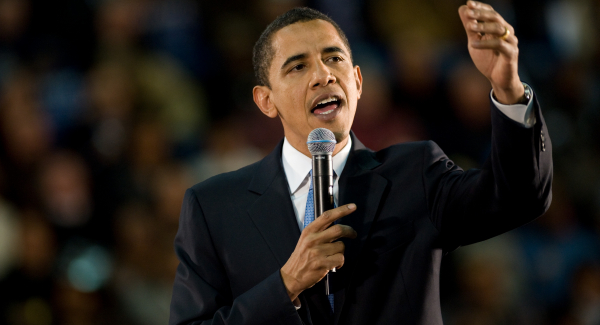The riddle of death
Martin Luther King Jr., the social activist who represents for many the ideal of a meaningful life, foreshadowed his own assassination when he said, "A man who won’t die for something is not fit to live." These words may resonate with us, but Woody Allen spoke for many of us as well when he said, "I’m not afraid of dying – I just don’t want to be there when it happens." The idea of death occupies a unique place in our minds: it is both the sum of all fears and a kind of golden standard by which we measure an individual’s commitment to an ideal. We honor and understand King Jr.’s sacrifice insofar as almost all of us possess ideals for which we believe we would give everything, whether it’s the love of our children, fighting oppression in a foreign country, or protecting our personal freedoms. Yet we empathize with Allen because death seems like a terrifying and unfair fate for us, instilled as we are not only with drives toward self-preservation (we seek food when hungry, react quickly to external threats), but also an advanced consciousness that harbors love and a fear of loss for many aspects of our lives.
As Irvin Yalom puts it, death is like an absurd contract we were never asked to sign; but it is nevertheless a physical reality that helps shape the cognitive existence of the only species with complex, temporal self-representation and symbolic consciousness (us). Other animals may grieve their dead, but lacking the symbolic cognitions that would prompt them to project from the experience of others onto an inner representation of themselves, its unlikely they walk away from the death of a relative as we do, thinking, "that will be me someday." Thus the attempt to come to terms with our unique awareness of personal death has driven human culture since its inception, as in the Sumerian Epic of Gilgamesh (the first known work of prose fiction in any modern sense), which centered around the search for immortality.
So if death is a contract for which we’d all like to find an escape clause, then why is history scattered with stories of those who "sealed the deal" themselves: those who went knowingly to their deaths in the name of an abstract entity like freedom, country or religion? And what is it about human psychology that has made so many – from the Crusaders of old to the 9/11 terrorists – willing to bring so much death into the world?The role of awareness of mortality in the human psyche
Terror management theory (TMT) provides answers to such questions by offering an analysis of the role of the human awareness of mortality in our mental and social lives. The scientists who founded the theory in the mid- 1980s – Jeff Greenberg (University of Arizona), Sheldon Solomon (Skidmore College), and Tom Pyszczynski (University at Colorado Springs) – built the theory upon a foundation laid by cultural anthropologist Ernest Becker in his book The Denial of Death(1973). The theory begins with the idea that, like other animals, humans are predisposed in many ways to want to stay alive. Most notably, they experience fear when they perceive threats to continued existence, leading to fight or flight responses. Yet, unlike other animals, humans are aware that their desire to stay alive will ultimately be thwarted, that inevitably they will die, and furthermore, that death could come at any time for a wide range of reasons (heart attack or stroke, car accident or earthquake, guided missile or terrorist attack, etc).

TMT posits that this awareness of our vulnerability and ultimate mortality creates an ever-present potential for anxiety, and that to minimize this potential for anxiety, humans must in some way deny their precarious mortal state. The way we do this is by viewing ourselves as enduring, significant beings in a meaningful world, rather than as mere material animals fated only to obliteration upon death. Cultures encourage people to sustain this symbolic view of themselves and the world by promoting worldviews which convey that the world is orderly, meaningful, and permanent, and that they will transcend their own death by being valued contributors to that meaningful world.
Cultures offer death transcendence in two general forms. They offer literal immortality to those of value through the concept of the eternal soul and heaven. But they also promise symbolic immortality through identification with the ongoing culture and lasting symbols, offspring, and culturally valued achievements. The more one meets internalized cultural standards for being valued, the greater one’s self-esteem and the more qualified one feels for receiving symbolic immortality. After all, if you have a reputation as a wonderful and unique personality, or your writings are deemed good enough to publish or your athletic feats good enough to televise, then even if you pass away tomorrow, you can take comfort in the knowledge that some aspect of yourself, a legacy, will continue beyond your death. Thus humans throughout time – up to today – have been driven by needs for belief in a meaningfulcultural worldview and self-esteem, in order to gain a sense of permanence counteracting the knowledge of potential annihilation. According to TMT, then, humans function relatively securely as long as they sustain faith in such a worldview and in their value within the context of that worldview.
TMT has implications for a wide array of topics, ranging from human sexuality to robotics (Greenberg, Solomon, & Arndt, 2007), but the theory makes two points particularly pertinent to the human propensity for violence. First, because psychological security from the fear of death depends on faith in one’s own culturally derived worldview, the very existence of religious faiths, ideologies, or nations that promote alternative worldviews calls into question the validity of one’s own worldview and thereby arouses anxiety. To minimize these threats to psychological security, people are prone to champion their own worldview and respond to different others with hostility and aggression, resulting in prejudice and intergroup aggression.
Second, psychological security is predicated not just on faith in one’s worldview, but also on the self-esteem afforded by living up to the standards of value of that worldview. Therefore, if the worldview prescribes actions dangerous to self or others in order to feel of value, concerns with mortality will fuel actions that bring death to the fore. The empirical literature guided by TMT amply demonstrates the ways in which concerns about mortality can contribute to risky and destructive actions.
The evidence for terror management: Effects of mortality salience on in-group bias, out-group aggression, and politics
To understand the wealth of empirical research that has supported TMT over the past two decades (recently summarized inGreenberg, Solomon, & Arndt, 2007), one must first grasp the mortality salience (MS) hypothesis, one of the core hypotheses derived from the theory. Simply put, the MS hypothesis holds that, if much of people’s activity and thinking is oriented toward sustaining cultural frameworks and self-images that provide security against the thought of death, then reminding individuals of their mortality should activate bolstering of those security-providing beliefs. If our sense of self-esteem and our faith in elements of our cultural worldview that give our lives meaning serve as cognitive anxiety buffers, constantly sheltering us from death fear, then exposing participants to death reminders should activate these psychological defenses. Researchers who run MS lab experiments first expose participants to relatively innocuous reminders of their mortality – as simple as asking them the first sentence that comes to mind when they think about their own death, as subtle as the word "death" flashed on a computer screen so quickly it isn’t consciously noticed – and then give them the opportunity to bolster either their self-esteem, or faith in their religious group, nation, or political party (known as worldview defense). The participants aren’t even aware of the cognitive process occurring, but MS causes them to latch onto these security-providing concepts.
A large set of studies have clarified the psychological processes that occur when some external event, whether a laboratory MS induction or something a person encounters in their day-to-day life, reminds that person of their own death (Arndt et al., 2004;Pyszczynski et al., 1999). When such death-related thoughts enter consciousness, people initially try to convince themselves that death is a distant threat (e.g., "I am young and healthy", or "I am very careful to behave safely"), and actively try to suppress thoughts of death, pushing them out of consciousness. Such conscious suppression efforts are generally successful for the average, non-paranoid person; nevertheless, after these active efforts are relaxed, thoughts of death remain on the fringes of consciousness. These lingering thoughts – no longer directly accessible to the person – signal the possibility that the idea of death may return to consciousness and engender intense anxiety. This motivates the individual to bolster their faith in their worldview and their own self-worth. These defenses then free the mind from the threat of intruding thoughts of death and the anxiety they could arouse, at least until some external event reminds the individual of death again, or threatens the structures (faith in their worldview and self-worth) that protect people from such thoughts (Schimel, Hayes, & Williams, 2007).
The effect of death reminders on the proclivity to strive after self-esteem or engage in worldview defense has been established in over 300 studies conducted in countries as diverse as the Netherlands, Israel, Iran, and China. In some of the earliest TMT experiments (Greenberg et al., 1990), American college students who were reminded of their own death subsequently demonstrated significantly more positive reactions toward the author of an essay praising the U.S., and more negative reactions toward the writer of a U.S.-critical essay (compared to control participants who, rather than receiving MS, contemplated a neutral topic). A similar process was observed when Christians for whom mortality had been made salient provided more positive evaluations of a Christian and more negative evaluations of a Jewish target (Greenberg et al., 1990). More recently, Jonas, Fritsche, and Greenberg(2005) found that although Germans interviewed in front of retail stores showed no pro-German bias, Germans interviewed at a cemetery greatly preferred German products and locations over foreign ones. These and many other studies have shown that MS leads people to cling to and defend important aspects of their cultural worldview and derogate those with alternative worldviews.
Unfortunately, MS effects have been shown to go beyond the realm of mere cognition into defensive behaviors that could prove dangerous for both the actor and those around him. For instance, one classic study showed that after contemplating death, Israeli soldiers who based their self-esteem partly believed their driving skills took more risks to show off on a driving simulator after contemplating death (Taubman, Florian, & Mikulincer, 1999). Another showed that for people who derive self-worth from a nice tan, MS leads to a preference for less cancer-protective sunscreen (Routledge, Arndt, & Goldenberg, 2004). Even more disturbingly, research has linked MS to actual aggressive behavior taken towards members of an outgroup (McGregor et al.,1998). Only after a death reminder did participants believing they were taking part in product testing research dole out greater quantities of painfully intense hot sauce to be consumed by a target, simply because they believed her to belong to a different political party from their own!
More recent studies have found that terror management plays a role in important political preferences. From a TMT perspective, politicians who confidently advocate the greatness of one’s own group should be most appealing in the wake of reminders of death. In research in the U.S. conducted prior to the 2004 Presidential Election, participants showed more approval of an essay supporting George W. Bush’s Iraq policy, and were more willing to vote for Bush than opposing candidate John Kerry (regardless of their political orientation), after being reminded of either their own death or the terrorist attacks of 9/11/01 (Landau et al., 2004). These results suggest that an important reason why Bush eventually won the favor of the American public a second time was his campaign’s emphasis on protecting the nation from threats of terrorism that might prove deadly if not quelled. The Bush Administration likely initiated widespread worldview defense processes in the public – removing any hope of immediate troop withdrawal from Iraq – by constantly reminding Americans of 9/11 and their vulnerability through rhetorical emphasis on the deadly threat posed by terrorists and "Axis of Evil" states.
Broaching the subject of terrorism brings us to what is perhaps the most alarming – and potentially revealing – piece of TMT evidence yet uncovered. In a recent study (Pyszczynski, Abdollahi et al., 2006), Iranian college students who had thought about their own death subsequently showed greater favor for a fellow student’s advocacy of suicidal attacks against Americans, and even a tendency to consider such actions themselves. There is perhaps no purer example of terror management than sacrificing oneself for Allah to attain eternal life in heaven. In parallel fashion, American conservatives reminded of death were especially supportive of the use of extreme military violence, even nuclear weapons, to eradicate "evil-doers" in the Middle East.
Such haunting findings speak directly to the riddle of death we first noted. We attach ourselves to cultural constructs that quell our fears with a promise of some form of immortality; but having psychologically invested our very lives in these entities, we defend them fiercely, too often with ignoble results, killing and being killed for our ideals, our country, our deities. Indeed, further supporting the idea of this circle of death, Routledge and Arndt (in press) recently found that MS increased British subjects reported willingness to die for their country unless they were first reminded of another path to symbolic immortality.
Of course, the willingness to engage in self-sacrifice is not the most common form of combating death anxiety. There are many ways of endorsing and living up to the values of most cultural worldviews without hastening our own demise, or that of others. Still, history suggests that, all too often, non-suicidal aggression has served to defend cherished worldviews; to paraphrase the film Patton, wars are won not by dying for your country, but by making someone else die for theirs. Such a mindset was displayed by the Christian participants in a study conducted by Hayes, Schimel and Williams (2008), who displayed worldview defense in response to a threat to Christianity, but not after reading an article describing the deaths of several Muslims in a plane crash. In a bitter twist of irony, the deaths of different others can sometimes make us feel better about our own.
"A way to the better…"?
Predicted effects of MS have been demonstrated using a variety of forms of death reminder and a wide range of measures. Additionally, aversive control topics including contemplation of isolation, uncertainties, failure, and intense physical pain have been used across studies and they consistently fail to produce the same effects as reminders of one’s own death. Taken as a whole, the TMT literature shows that the awareness of death holds more power over our lives than we realize, and that it can fuel ideologies that bring more death into the world in a chilling circle.
However, not all TMT findings have been as bleak as those we have summarized. Just as human culture can contain good and evil elements, ranging from beautiful art to xenophobic tendencies, death as a key existential motivator can spur us on to lofty heights as well as dark depths. Recent directions in TMT research have indicated that reminders of mortality can sometimes motivate pro-social actions, as one excellent way to obtain symbolic immortality in most cultures is to establish a reputation for generosity and selflessness. Thus in some experiments MS participants have been more willing to donate to charities, or simply help out friends in day-to-day situations (e.g., Jonas et al., 2002). Other research hints at the possibility that there may be non-defensive ways that people can come to terms with their mortality (Cozzolino et al., 2004).
Even though TMT lays bare our deepest fears and most violent or inhumane tendencies, consideration of this dark side of life may be a necessary step for the science of humanity to one day disrupt the destructive circular influence of death on our lives. To quote a motto Becker (1975) paraphrased from novelist and poet Thomas Hardy: "If a way to the better there be, it lies in taking a full look at the worst."
References
Arndt, J., Cook, A., & Routledge, C. (2004). The blueprint of terror management: Understanding the cognitive architecture of psychological defense against death-related thought. In J. Greenberg, S. Koole, & T. Pyszczynski (Eds.), Handbook of Empirical Existential Psychology. New York: Guilford.
Becker, E. (1973). http://www.amazon.com/Denial Death-Ernest-Becker/dp/B0018SWBN2/ref=sr_1_2?ie=UTF8&s=books&qid=1216651197&sr=1-2" target="_blank">The denial of death. New York: The Free Press.
Becker, E. (1975). Escape from evil. New York: The Free Press.
Cozzolino, P. J., Staples, A. D., Meyers, L. S., & Samboceti, J. (2004). http://psp.sagepub.com/cgi/content/abstract/30/3/278 " target="_blank">Greed, death, and values: From terror management to transcendence management theory. Personality and Social Psychology Bulletin, 30, 278-292.
Greenberg, J., Pyszczynski, T., Solomon, S., Rosenblatt, A., Veeder, M., Kirkland, S., et al. (1990). Evidence for terror management theory II: The effects of mortality salience on reactions to those who threaten or bolster the cultural worldview. Journal of Personality and Social Psychology, 58, 308-318.
Greenberg, J., Solomon, S. & Arndt, J. (2007). A basic but uniquely human motivation: Terror management. In J. Shah & W. Gardner (Eds.), http://www.amazon.com/Handbook-Motivation-Science-James-Shah/dp/15938556... " target="_blank">The Handbook of Motivation Science (p. 114-136). New York: Guilford Press.
Hayes, J., Schimel, J., & Williams, T. J. (2008). http://www.ncbi.nlm.nih.gov/pubmed/18466412 " target="_blank">Fighting death with death: The buffering effects of learning that worldview violators have died. Psychological Science, 19, 501-507.
Jonas, E., Fritsche, I., & Greenberg, J. (2005). http://www.sciencedirect.com/science?_ob=ArticleURL&_udi=B6V8H-4C9HPFJ-2... " target="_blank">Currencies as cultural symbols - An existential psychological perspective on reactions of Germans toward the Euro. Journal of Economic Psychology, 26, 129-146.
Jonas, E., Schimel, J., Greenberg, J. (2002). http://psp.sagepub.com/cgi/content/abstract/28/10/1342 " target="_blank">The Scrooge effect: Evidence that mortality salience increases prosocial attitudes and behavior. Personality and Social Psychology Bulletin, 28, 1342-1353.
Landau, M. J., Solomon, S., Greenberg, J., Cohen, F., Pyszczynski, T., Arndt, J., et al. (2004).http://psp.sagepub.com/cgi/content/abstract/30/9/1136 " target="_blank">Deliver us from evil: The effect of mortality salience and reminders of 9/11 on support for President George W. Bush. Personality and Social Psychology Bulletin, 30, 1136-1150.
McGregor, H., Lieberman, J., Greenberg, J., Solomon, S., Arndt, J., Simon, L., et al. (1998).http://www.ncbi.nlm.nih.gov/pubmed/9523407 " target="_blank">Terror management and aggression: Evidence that mortality salience promotes aggression toward worldview-threatening individuals. Journal of Personality and Social Psychology, 74, 590-605.
Pyszczynski, T., Abdollahi, A., Solomon, S., Greenberg, J.,Cohen, F., & Weise, D. (2006).http://psp.sagepub.com/cgi/content/abstract/32/4/525/ " target="_blank">Mortality salience, martyrdom, and military might: The Great Satan versus the Axis of Evil. Personality and Social Psychology Bulletin, 32, 525-537.
Pyszczynski, T., Greenberg, J., & Solomon, S. (1999).http://www.psych.utoronto.ca/users/peterson/psy430s2001/Pyszczynski%20T%... " target="_blank">A dual-process model of defense against conscious and unconscious death-related thoughts: An extension of terror management theory. Psychological Review, 106, 835-845.
Routledge, C. & Arndt, J. (in press). http://www3.interscience.wiley.com/journal/114274865/abstract?CRETRY=1&S... " target="_blank">Self-sacrifice as self-defence: Mortality salience increases efforts to affirm a symbolic immortal self at the expense of the physical self. European Journal of Social Psychology.
Routledge, C., Arndt, J., & Goldenberg, J. L. (2004). A time to tan: Proximal and distal effects of mortality salience on sun exposure intentions. Personality and Social Psychology Bulletin, 30, 1347-1358.
Schimel, J., Hayes, J., & Williams, T. (2007). http://www.ncbi.nlm.nih.gov/pubmed/17484605 " target="_blank">Is death really the worm at the core? Converging evidence that worldview threat increases death-thought accessibility. Journal of Personality and Social Psychology, 92, 789-803.
Taubman Ben-Ari, O., Florian V., & Mikulincer, M. (1999). http://psycnet.apa.org/index.cfm?fa=search.displayRecord&uid=1999-00166-003 " target="_blank">The impact of mortality salience on reckless driving: A test of terror management mechanisms.Journal of Personality and Social Psychology, 76, 33-45.




